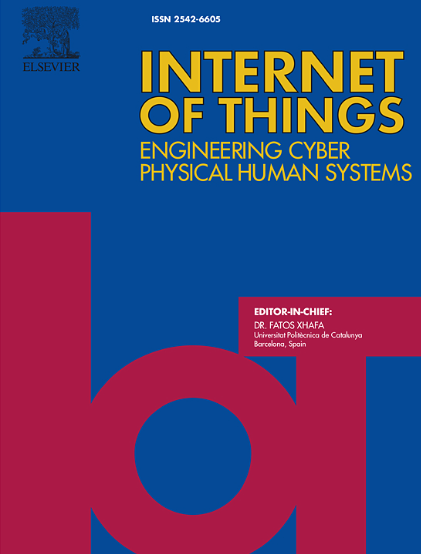An IoT-based contactless neonatal respiratory monitoring system for neonatal care assistance in postpartum center
IF 6
3区 计算机科学
Q1 COMPUTER SCIENCE, INFORMATION SYSTEMS
引用次数: 0
Abstract
According to previous studies, one of the major causes of 20 % to 25 % of neonatal deaths is respiratory distress syndrome (RDS). Early identification, progressive monitoring, and treatment and/or management of neonatal RDS can substantially increase the rate of survival in neonates. However, global research indicates frequent shortages and burnout among nursing staff, especially in postpartum units, contributing to the difficulty in early identification of RDS in neonates. Clinicians currently use breathing sounds and frequency as key criteria in the Neonatal Resuscitation Program (NRP) for identifying and treating RDS. In practice, the monitoring of respiratory signal abnormalities relies on sensor patches, which frequently detach from the neonates’ slippery skin, leading to potential skin injuries and unstable signal reception. This paper presents an Internet of Things (IoT)-based contactless neonatal respiratory monitoring system that integrates computer vision (CV), beamforming microphone array (BFMA), and millimeter Wave (mmWave) radar, all connected to a cloud platform. Clinical trials revealed that CV-based neonatal feature identification achieved over 96 % accuracy within 40 cm to 120 cm. The neonatal breathing sound strengthening, utilized CV and BFMA, achieved an average sound-to-noise ratio (SNR) of 5.07 dB, and CV with mmWave radar reduced chest displacement signal error from 0.66 to 0.26 BPM. Additionally, survey results showed that doctors and clinical personnel were satisfied with the system's functionality and usability. This demonstrates the system's ability to assist in monitoring respiratory signals of swaddled neonates and in the early identification of neonatal RDS, with further applications in neonatal care at postpartum centers.
基于物联网的非接触式新生儿呼吸监测系统,用于产后护理中心的新生儿护理辅助工作
根据以往的研究,呼吸窘迫综合征(RDS)是造成 20% 至 25% 新生儿死亡的主要原因之一。早期识别、逐步监测、治疗和/或管理新生儿呼吸窘迫综合征可大大提高新生儿的存活率。然而,全球研究表明,护理人员(尤其是产后病房的护理人员)经常出现短缺和职业倦怠,导致难以及早识别新生儿 RDS。目前,临床医生在新生儿复苏计划(NRP)中将呼吸音和频率作为识别和治疗 RDS 的关键标准。在实践中,呼吸信号异常的监测依赖于传感器贴片,而传感器贴片经常会从新生儿湿滑的皮肤上脱落,导致潜在的皮肤损伤和信号接收不稳定。本文介绍了一种基于物联网(IoT)的非接触式新生儿呼吸监测系统,该系统集成了计算机视觉(CV)、波束成形麦克风阵列(BFMA)和毫米波(mmWave)雷达,并全部连接到云平台。临床试验表明,基于计算机视觉的新生儿特征识别在 40 厘米至 120 厘米范围内的准确率超过 96%。利用 CV 和 BFMA 进行的新生儿呼吸声强化取得了 5.07 dB 的平均声噪比 (SNR),CV 与毫米波雷达将胸部位移信号误差从 0.66 BPM 降至 0.26 BPM。此外,调查结果显示,医生和临床人员对系统的功能和可用性表示满意。这表明该系统有能力协助监测襁褓新生儿的呼吸信号和早期识别新生儿 RDS,并可进一步应用于产后中心的新生儿护理。
本文章由计算机程序翻译,如有差异,请以英文原文为准。
求助全文
约1分钟内获得全文
求助全文
来源期刊

Internet of Things
Multiple-
CiteScore
3.60
自引率
5.10%
发文量
115
审稿时长
37 days
期刊介绍:
Internet of Things; Engineering Cyber Physical Human Systems is a comprehensive journal encouraging cross collaboration between researchers, engineers and practitioners in the field of IoT & Cyber Physical Human Systems. The journal offers a unique platform to exchange scientific information on the entire breadth of technology, science, and societal applications of the IoT.
The journal will place a high priority on timely publication, and provide a home for high quality.
Furthermore, IOT is interested in publishing topical Special Issues on any aspect of IOT.
 求助内容:
求助内容: 应助结果提醒方式:
应助结果提醒方式:


